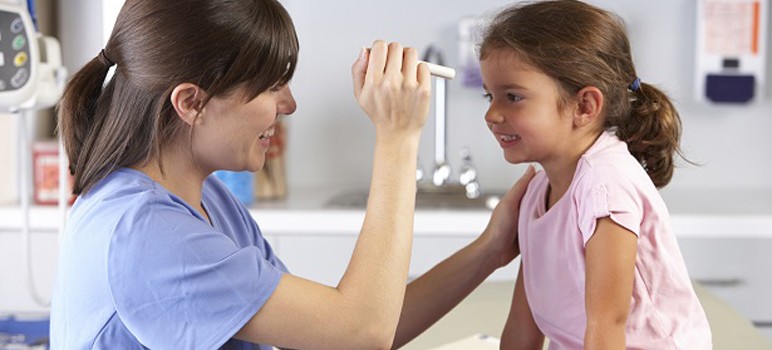Serious health issues can play out in schools every day, sometimes in life and death ways. Yet few schools have a credentialed school nurse at the ready to appropriately address the problem.
Only 45 percent of the nation's schools have a full-time, on-site nurse, according to the National Association of School Nurses (NASN). Vermont leads the nation in nurse to student ratio at one school nurse for every 275 students. Massachusetts, with arguably the best public school results in the country, has a ratio of one to 419. California, 40th in the nation in nurse to student ratio, holds a troubling balance of one school nurse for every 2,240 students.
Whether it's a student with a life threatening food allergy, epileptic seizure disorder, seriously injured on the playground, or in need of psychotropic drugs being administered, schools are too easily overwhelmed with trying to manage health issues while focusing on academic achievement.
On Jan. 1, a new school law went into effect that mandates a few volunteer school employees be trained on the emergency use of an EpiPen (epinephrine auto injector) and for all publicly-funded schools to stock at least one at all times. SB 1266, authored by State Sen. Bob Huff (R-Diamond Bar), provides an immediate life-saving remedy at the ready to treat anaphylactic shock. The allergic reaction can be caused by food, insect bites, bee stings and medications.
And yet, the California Teachers Association (CTA) and California Federation of Teachers (CFT) opposed the new law. I fully understand their reticence to endorse this law.
Where will this new mandate lead? Every teacher checking for flu symptoms during flu season?
For my tax dollar, I prefer to keep our teachers focused on the academic life of students. Those who are trained to deal with health issues should administer treatments, especially when a life might be threatened.
As a former principal of elementary and middle schools in Santa Clara County, I know that many schools have a health aide who will come in to mostly deal with paperwork caused by state mandates (e.g. immunizations). The health aide is usually part time and comes to work more often depending on the school size and district's budget. The real every day health provider for the hundreds of children who usually attend an elementary school is the secretary/attendance clerk. The principal is the usual backup.
Prior to the Proposition 13 (1978) tax revolt, many Santa Clara County Schools had full or half-time licensed school nurses. Since then we have hacked away at this critical resource to ensure a balanced budget. The cuts come at the expense of health and safety for some of our most vulnerable children.
A credentialed school nurse trained to care for 4 year olds through 18 year olds in PK-12 schools will not only keep children safer but also help them learn. More nurses would allow schools to conduct hearing and vision screenings, as well as administer medications and vaccines and managing chronic illnesses. Healthier students leads to increased student attendance. A caring, wise society invests in the health of its youth.


Talk is cheap… The requirements also apply to County Offices of Education. How about you start by adding nurses to the schools you are running?
Exactly.
> Only 45 percent of the nation’s schools have a full-time, on-site nurse,,,,
Horrors!
What percent of “the nation’s schools” have birthing centers and maternity wards?
It seems like the Public Schools are missing an opportunity to take complete ownership of children in our society.
Feeding. Housing. Transportation, Healthcare. After school “care”. Political indoctrination.
A caring society would make it possible for parents to give birth at a Public School, turn the kid over to the nurse, and come back after twelve or fifteen years, and pick up the kid to take him to the unemployment office.
“A caring society would make it possible for parents to give birth at a Public School, turn the kid over to the nurse, and come back after twelve or fifteen years, and pick up the kid to take him to the unemployment office.” Such a concept has existed in Israel for 65 years–the kibbutzim. Infants are removed from all but the shortest daily contact with their parents very early on. They are raised during the workday in nurseries by nannies. As they get older they are taught/indoctrinated (depending on your point of view) by teachers, while their parents do their daily jobs. It would be a US Democrat’s/It takes a Villager’s wet dream. It would be a nightmare for anti-nanny-staters in this country. But in Israel, it works.
Sure a nurse for every school would be optimal, who is going to pay the extra taxes to afford it? Everyone likes good ideas but then doesn’t want to pay the taxes to afford them. Not just schools but all aspects of govt.
As a society we still haven’t figured out what level of govt we want & are willing to pay for.
Until then…..
All fine and good until a student DOESN’T get the care needed while at school and dies. Who do you blame then???????
This is not the result of a “nursing shortage” as the title of this article implies. It is an unwillingness to make hiring nurses for the schools a priority.
Schools used to have a resident nurse at each site . Now a small district with 4800 students has only 3 to deal with all the health issues . Lest say understaffed there.